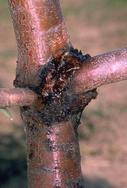
American plum borer
Identification tip: Extensive gumming around scaffold
crotches, at pruning wounds, or in crown galls can indicate
the presence of American plum borer. |
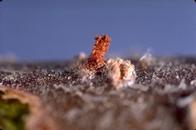
Peach twig borer hibernacula
Identification tip: Hibernacula are most commonly
found in the crotches of 2- or 3-year-old wood. Look for
tiny piles of reddish frass. |
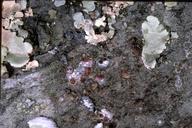
Italian pear scale
Identification tip: Look under moss or lichens for
the light-gray covering of this scale. Under the cover, the
scale's body is reddish. |

Fruit tree leafroller eggs
Identification
tip: Overlapping eggs are laid in masses on limbs and twigs;
initially they are covered with a gray secretion that turns
white upon aging.
|
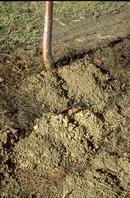
Pocket gophers
Identification tip: Pocket gopher mounds are generally
fan-shaped and have a plugged opening. |
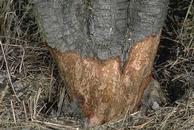
Voles
Identification tip: Voles chew the bark off trees,
just above and below the soil line. |


